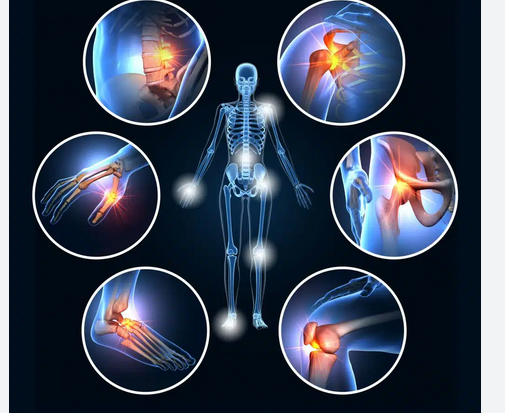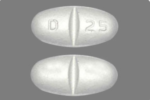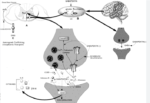Trazodone is sometimes used off-label for the management of chronic pain, particularly when chronic pain is associated with sleep disturbances, depression, or anxiety. Although it is not typically considered a primary analgesic (pain-reliever), Trazodone’s effects on serotonin, its sedative properties, and its ability to improve sleep quality make it useful in certain pain conditions.
Chronic pain is long standing pain that persists beyond the usual recovery period or occurs along with a chronic health condition, such as arthritis. Chronic pain may be “on” and “off” or continuous. It may affect people to the point that they can’t work, eat properly, take part in physical activity, or enjoy life.
It is particularly helpful for patients dealing with conditions like fibromyalgia, neuropathic pain, and chronic musculoskeletal pain.
How Trazodone Helps with Chronic Pain
Chronic pain conditions often have a psychological and emotional component, and addressing these can help alleviate the perception of pain. Trazodone helps manage chronic pain primarily through the following mechanisms:
- Serotonin Reuptake Inhibition:
- Trazodone acts as a serotonin reuptake inhibitor, increasing the availability of serotonin in the brain. This neurotransmitter plays a crucial role not only in mood regulation but also in the modulation of pain perception.
- Increased serotonin levels help reduce pain sensitivity by altering pain signaling pathways in the brain and spinal cord, making pain feel less intense.
- Sleep Improvement:
- Chronic pain often disrupts sleep, and poor sleep can, in turn, worsen pain sensitivity. Trazodone’s sedative effects help restore normal sleep patterns, which is essential for pain management.
- By improving sleep quality, Trazodone breaks the vicious cycle of pain-induced insomnia and the exacerbation of pain due to sleep deprivation. Better sleep can lead to less pain intensity and improved overall well-being.
- Reduction of Hyperarousal:
- Trazodone helps reduce hyperarousal, which is common in chronic pain conditions, particularly those with an emotional or psychological component like fibromyalgia or neuropathic pain. Hyperarousal refers to an overly sensitized nervous system, which can amplify pain signals.
- Trazodone’s calming effects help regulate the autonomic nervous system and reduce the hyperawareness of pain, making patients feel more relaxed and less focused on their pain.
- Improvement of Mood and Anxiety:
- Chronic pain often leads to, or exacerbates, depression and anxiety. Trazodone’s antidepressant and anxiolytic (anti-anxiety) properties can help alleviate the emotional burden of chronic pain, indirectly improving the patient’s ability to cope with pain.
- By stabilizing mood and reducing anxiety, Trazodone helps reduce the psychological stress associated with chronic pain, which can exacerbate physical symptoms.
- Alpha-1 Adrenergic Receptor Blockade:
- Trazodone blocks alpha-1 adrenergic receptors, which can help relax muscles and reduce the physical tension often associated with chronic pain conditions, especially in patients with muscle-related pain such as fibromyalgia or tension headaches.
Chronic Pain Conditions Treated with Trazodone
- Fibromyalgia:
- Fibromyalgia is a condition characterized by widespread musculoskeletal pain, fatigue, and sleep disturbances. Trazodone is particularly effective for fibromyalgia because of its ability to improve sleep, which is a core issue for patients.
- While Trazodone doesn’t directly relieve fibromyalgia pain, it helps by improving sleep quality, reducing anxiety, and stabilizing mood, which can reduce the overall pain perception and fatigue in fibromyalgia patients.
- Neuropathic Pain:
- Neuropathic pain arises from nerve damage and can manifest as burning, tingling, or shooting pain. Trazodone may be used in some cases of neuropathic pain, particularly when traditional pain medications or anticonvulsants are insufficient.
- Though not as effective as primary treatments like gabapentin or pregabalin, Trazodone’s serotonergic effects and ability to improve sleep make it useful for patients who experience nighttime neuropathic pain or who have mood disturbances associated with their pain.
- Chronic Musculoskeletal Pain:
- Conditions like chronic back pain, arthritis, and myofascial pain syndrome can benefit from Trazodone’s sedative and mood-stabilizing properties. Chronic pain in these conditions is often exacerbated by stress, poor sleep, and muscle tension, all of which can be improved with Trazodone.
- Chronic Headaches:
- In patients with chronic tension-type headaches or migraines, Trazodone can help by reducing muscle tension and anxiety, and promoting sleep. It may also be used in combination with other treatments to reduce headache frequency and severity.
- Complex Regional Pain Syndrome (CRPS):
- CRPS is a chronic pain condition often affecting a limb after injury or surgery, characterized by severe, persistent pain. Trazodone’s use in CRPS is not as common, but its benefits in improving sleep, reducing anxiety, and stabilizing mood make it a supportive treatment in patients with CRPS who suffer from significant sleep disturbances and emotional distress.
Dosage of Trazodone for Chronic Pain
The dosing of Trazodone for chronic pain management varies depending on the patient’s needs, especially in terms of addressing both pain and sleep disturbances. The typical dosage for chronic pain is usually on the lower end compared to the dosages used for depression.
- Starting Dose:
- A low dose of 50-100 mg per night is often used, especially if the primary goal is to improve sleep and relieve some pain-related anxiety.
- Starting with a low dose helps assess the patient’s tolerance and avoid excessive daytime sedation.
- Maintenance Dose:
- For ongoing treatment, the dose may be increased to 100-200 mg per night, depending on how well the patient responds and how much relief they get from their pain and sleep issues.
- Some patients may benefit from a split dosing schedule, with a portion taken in the evening and the remainder before bedtime to address daytime pain and nighttime sleep issues.
- Maximum Dose:
- In cases where depression or anxiety coexists with chronic pain, higher doses up to 300-400 mg per day might be necessary. However, higher doses increase the risk of side effects like excessive sedation, orthostatic hypotension, and dizziness.
How Trazodone Compares to Other Treatments for Chronic Pain
Trazodone is not a first-line treatment for chronic pain, as it is not primarily an analgesic. It is more commonly used as part of a multimodal pain management approach in combination with other medications like:
- NSAIDs or Acetaminophen for inflammatory or musculoskeletal pain.
- Antidepressants like Duloxetine (Cymbalta) or Amitriptyline (both SNRIs and tricyclic antidepressants are commonly used for chronic pain).
- Anticonvulsants like Gabapentin or Pregabalin, particularly for neuropathic pain.
- Opioids in severe cases (though these carry higher risks, including addiction and tolerance).
In comparison to these medications, Trazodone is often favored for its non-addictive nature, its ability to treat both mood disorders and insomnia, and its fewer cognitive side effects compared to benzodiazepines or opioids.
Common Side Effects When Used for Chronic Pain
- Drowsiness:
- This is the most common side effect, especially when Trazodone is used to improve sleep. While beneficial at night, it may cause excessive sedation if the dose is too high or if taken during the day.
- Orthostatic Hypotension:
- Trazodone can lower blood pressure, particularly when changing positions (from sitting to standing), leading to dizziness or fainting. This can be problematic for older adults or those with cardiovascular conditions.
- Dry Mouth:
- Trazodone’s anticholinergic effects can lead to dry mouth, which may become uncomfortable over time.
- Headaches and Gastrointestinal Issues:
- Headaches, nausea, and constipation are relatively common, especially during the first few weeks of treatment.
- Next-Day Grogginess:
- Some patients may feel overly sedated the next morning, especially if they take a higher dose or don’t get a full 7-8 hours of sleep.
- Cognitive and Motor Impairment:
- At higher doses, some patients may experience slowed thinking, poor concentration, or motor coordination issues, though this is less common than with stronger sedatives.
- Priapism (Rare):
- A rare but serious condition involving a prolonged, painful erection that requires immediate medical attention.
Potential Drug Interactions
Trazodone can interact with other medications commonly used for chronic pain or mood disorders:
- Serotonergic Drugs: Caution is needed when combining Trazodone with other serotonin-boosting medications (e.g., SSRIs, SNRIs, MAOIs) due to the risk of serotonin syndrome, a potentially life-threatening condition characterized by confusion, agitation, and increased heart rate.
- CNS Depressants: Combining Trazodone with other central nervous system depressants (e.g., alcohol, opioids, benzodiazepines) can enhance sedative effects, increasing the risk of respiratory depression or excessive sedation.
- Antihypertensive Medications: Trazodone’s effect on blood pressure may interact with medications used to control high blood pressure, potentially leading to hypotension.
Long-Term Use and Considerations
Trazodone is considered safe for long-term use in managing chronic pain, particularly because it does not carry the risk of addiction or dependence associated with other pain medications like
Pain Medications, Pain Relief, and Pain Management









